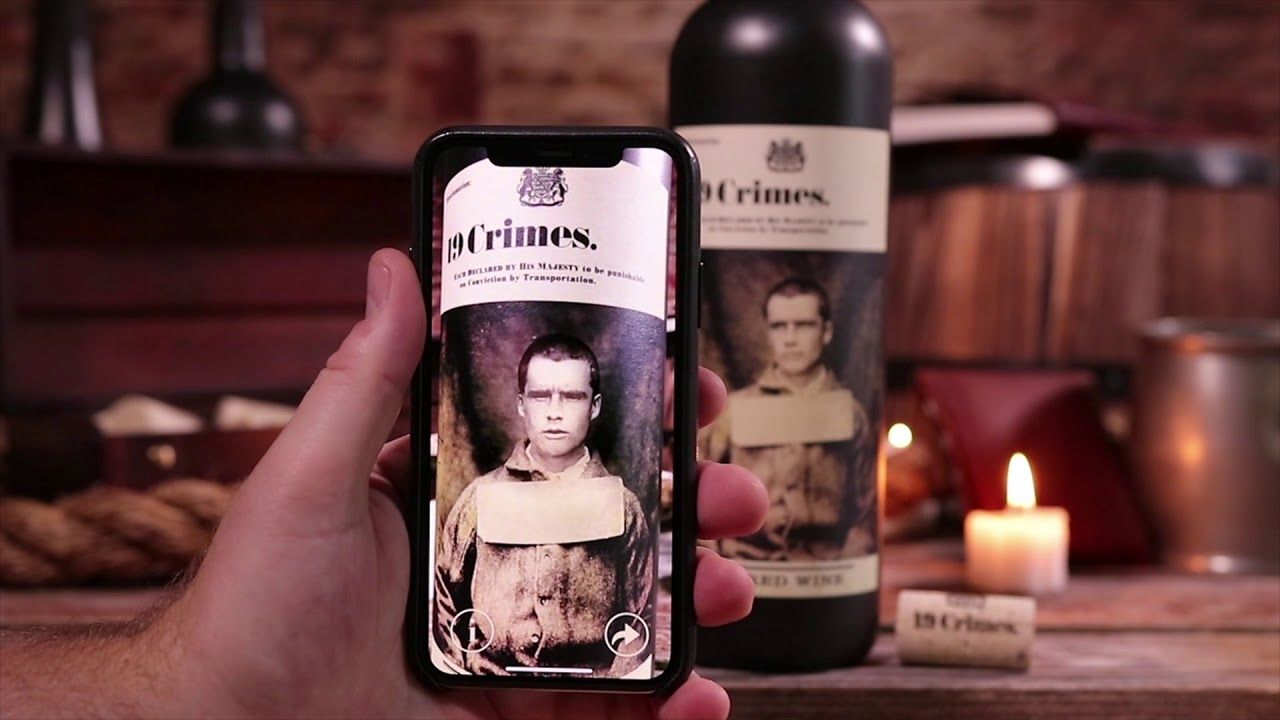Personal circumstance rather than our age is a more revealing way to determine what sort of consumer we might be, says Joe Fattorini of Fields Morris & Verdin and presenter of The Wine Show.
Joe Fattorini has a way with words, which probably helps if you are a presenter on TV with The Wine Show. But whilst he more than holds his own on screen with established Hollywood stars including Dominic West and Matthew Goode, he’s far more fun in real life. Up on the stage doing his thing.
Which was very much the case at last week’s wine2wine conference in Verona, hosted in partnership by Vinitaly and a chance for those who care about wine marketing, communications and consumer trends to meet up, share ideas and hear insights from those in the know. Like Fattorini.
Who else in the wine industry would dismiss most research based on what millennials think as being as insightful as discovering bears like to shit in the woods and when it comes to religion the Pope swings towards Catholocism? Yes, Fattorini has a way with words.
He started off by analysing what so much of the millennial based research usually concludes. That millennials are different because they are tech savvy, family focused, achievement and team orientated, constantly job hobbing and feedback seeking. As if no-one else above the age of 35 loves buying the latest iPhone, is ambitious, moves between jobs and loves to get a pat on the back for what they have done.
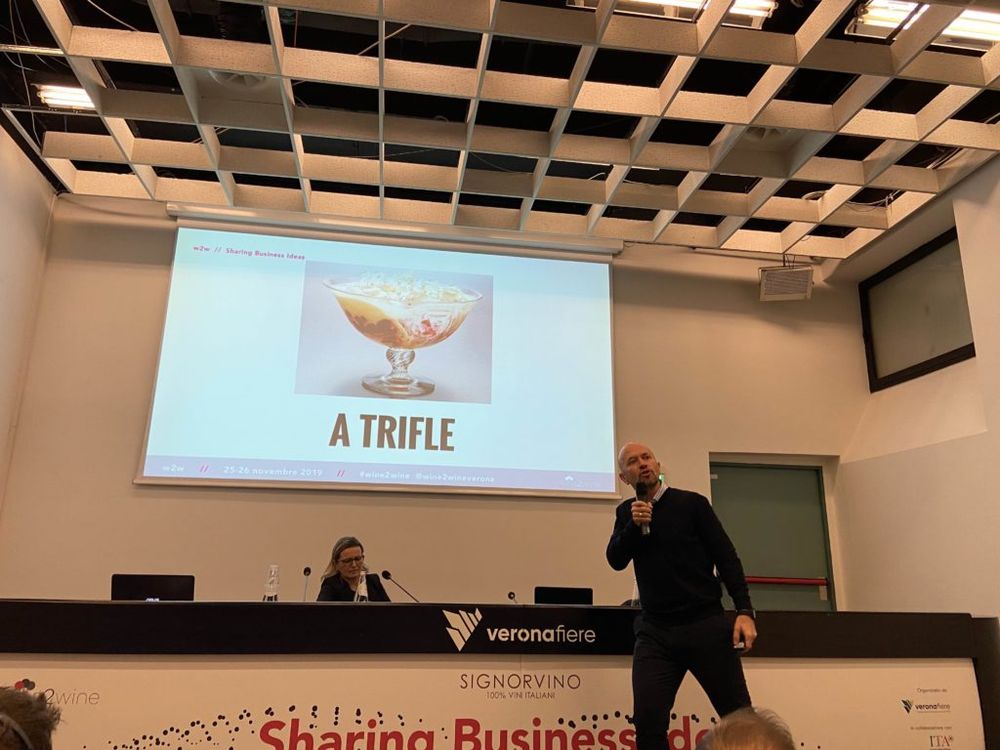
Splitting consumer research by age group soon becomes a mess, claimed Fattorini
“Trying to slice demographics by age group is like trying to slice a trifle,” said Fattorini. “It ends up as a mess.”
In fact many of the distinct characteristics often applied to millennials are no different to the personality traits we are supposed to have if you believe in star signs and what horoscopes can tell you about yourself, he added.
No significant differences
Fattorini says any research that looks at the values, attitudes and behaviours that people have based purely on their age quickly falls apart under analysis. “Yes, there are differences but they are not significant,” he stressed.
“All they tend to reveal is younger people tend to behave like younger people. They are less conservative. They challenge authority more. It means nothing.”
He said it would be like comparing “a pipe fitting welder in Gdansk with the Duchess of Cambridge” just because they happen to be the sam age and therefore must “act and behave the same”.
It’s particularly dangerous for the wine industry to be so fixated on millennials, argued Fattorini, because “millennials representless than 30% of wine drinkers in US and UK”.
Instead anyone involved in buying and selling wine in the UK should think of the middle aged, middle class couple holding hands sipping wine watching TV on the Googglebox TV series.

The middle aged couple drinking wine on a sofa on Gogglebox are your typical UK wine drinker, said Fattorini
Obsession with youth
But the wine industry is not alone, said Fattorini. Most expensive car adverting is also aimed at millennials when the majority of people at that age can’t afford to buy the cars being advertised, if they even have a car in the first place. The most people buying and trading in cars are the retired and elderly. They have the disposable income to do so, he stressed.
This obsession with constantly appealing to younger consumers is not surprising when the majority of people creating the adverts are of a similar age. “It’s nice to market to millennials,” he said.
The marketing and advertising sectors are already investing huge sums of money with influencers with no real idea of what influence they actually have.
He said part of his work is writing a regular column for the Radio Times TV listings magazine that is read by close to a 1m people a month. Yet his rate for doing so is around 75p a word, which is minuscule compared to what is being offered to influencers to take a picture of themselves with some product or another.
Remember, he added, that over 50s have 69% of all spending power and that 70% of disposable income is held by those over 55. That’s where wine should be concentrating so much more of its efforts, he said.
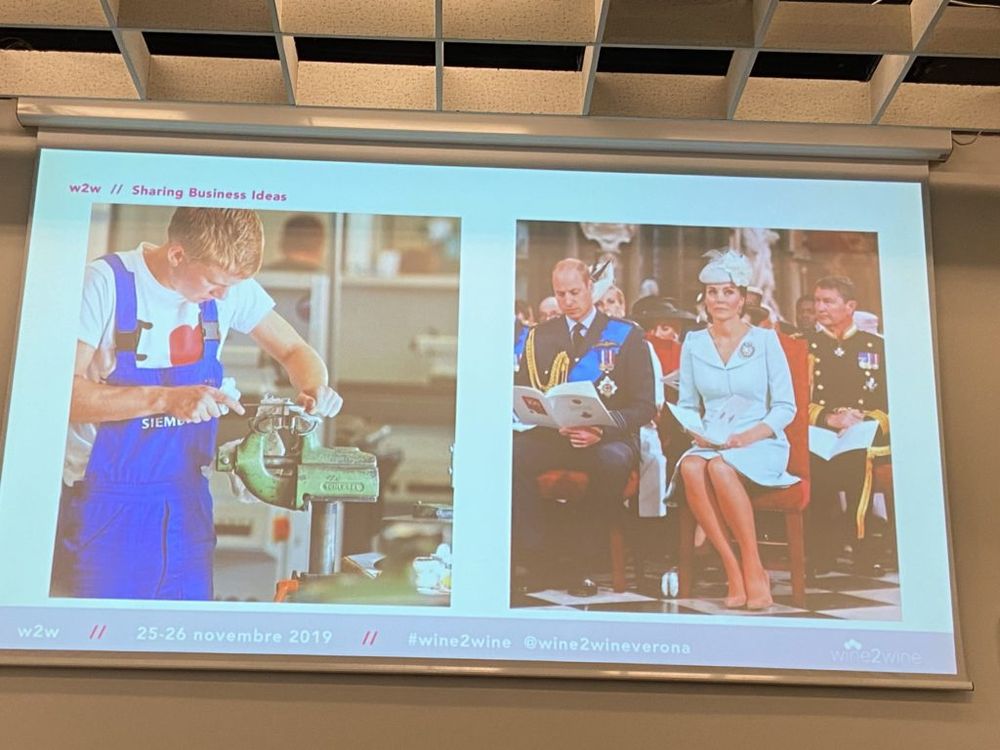
Bracketing millennials as one group is like comparing a Polish welder to the Duchess of Cambridge said Fattorini
Lifestyle and circumstances
Fattorini believes it’s not age that defines us, but our personal circumstances. What we are doing in our lives at any given time will have more of a bearing on what you might want to buy than the age of your last birthday.
It is far more effective, he argued, to look to slice and dice consumers not by their age, but how they behave and what their personal preferences are when it comes to eating, drinking, going out, and generally spending their money.
He shared some of the insights from the time he was working at Bibendum and how it looks to segment its customers into categories such as: mature foodies; big weekenders; suburban families; stretched spenders; urban professionals; new nesters
He cited himself and being a dad again at the age of 50. He once again could be described as a new nester, someone, usually aged below 35 years of age, who is going through the phase of having their first child. You’re certainly not going out clubbing any more, but staying in and spending more on food and drink and subscribing to box sets to watch on the TV.
Whereas for a few years after his divorce he transformed back into his early 20s and was going out all the time, drinking and going on dates.
The Bibendum research was carried out using a mixture of different data sets, from post codes through to asking people across different ages and backgrounds to record what kinds of wines they considered buying and then bought when out in bars or in shops.
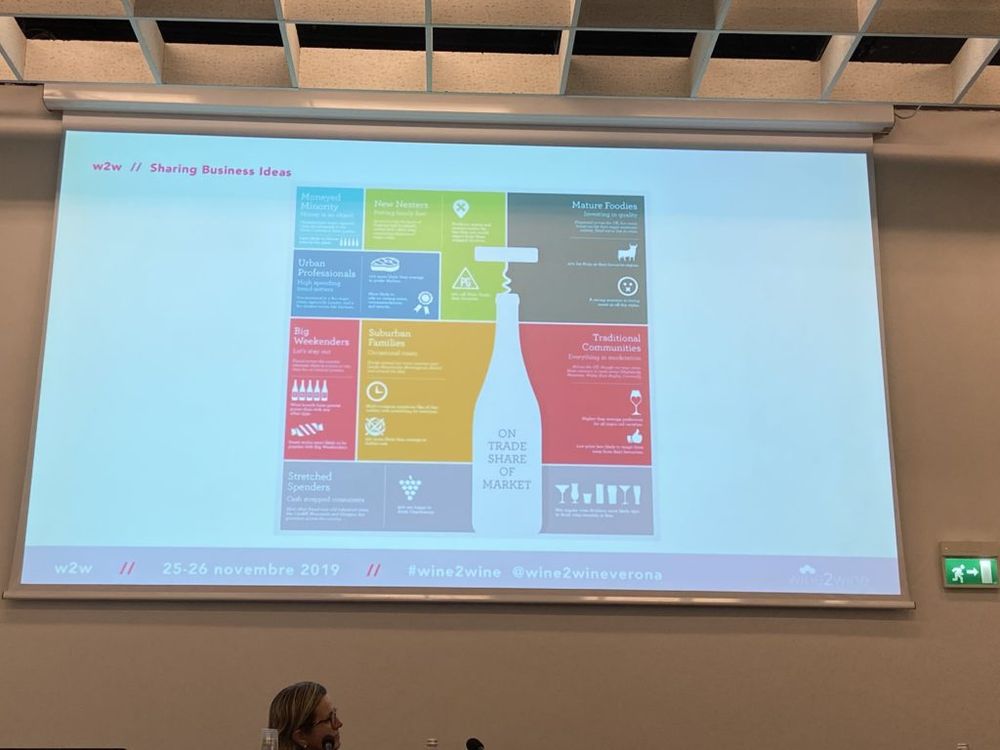
Bibendum splits its consumer research more by lifestyle and where they live than just their age
The key here, he said, was not just to ask someone to fill in a survey as they often will tell you what they think you want to know. Here the information was collected at the point of sale as they made the decision about what they were buying.
Bibendum could then use that data, split by postcode, to give it and its customers a clearer idea of the kinds of wines that people in different parts of the country are interested in buying. The post code analysis was key, added Fattorini, as it showed people will buy differently based on where they are. If they are at work in the City, for example, they buy differently to when they are at home in their suburban community.
On top of this Bibendum was able to put in data from what was being sold in different types of outlet in order to create multi layered set of insights based on hard, data. That’s far more effective than just looking at what one age group does or thinks, he claimed.
It’s all about the data
Its why were are likely to see more apps, and more interactive tools like the talking wine labels used by Treasury Wine Estates and its highly successful 19 Crimes brand. Yes, we are all drawn in and get excited about how clever it is to see a wine label come to life, but the crucial element here is the fact you have downloaded an app, and given Treasury open access to all the data they so desperately want about who you, when you opened the app and where.

The 19 Crimes talking wine labels might look good, but they are also a great way to gather data on the people watching them, said Fattorini
The data then showed Treasury, said Fattorini, that in a lot of cases the wine was being bought by middle aged mums to then give to their children, mostly sons, as a gift.
It meant it made more sense to market 19 Crimes in targeted womens’ magazines than it was spending money trying to appeal to younger drinkers, he explained.
By taking a data first approach you quickly realise that wine buying decisions are not always about the style of wine per se, as so many in the trade would like to believe, but more around how that person behaves as an individual and what his personal and family circumstances are.
That’s when you can really start to build up a picture of who that person is, and what sort of car they might drive, where they go on holiday. That’s how consumer research and marketing gets really effective, argued Fattorini.
“Segment people by target group. I am selling you a Wednesday wine, not a Saturday wine. Then position your marketing around that,” he said.
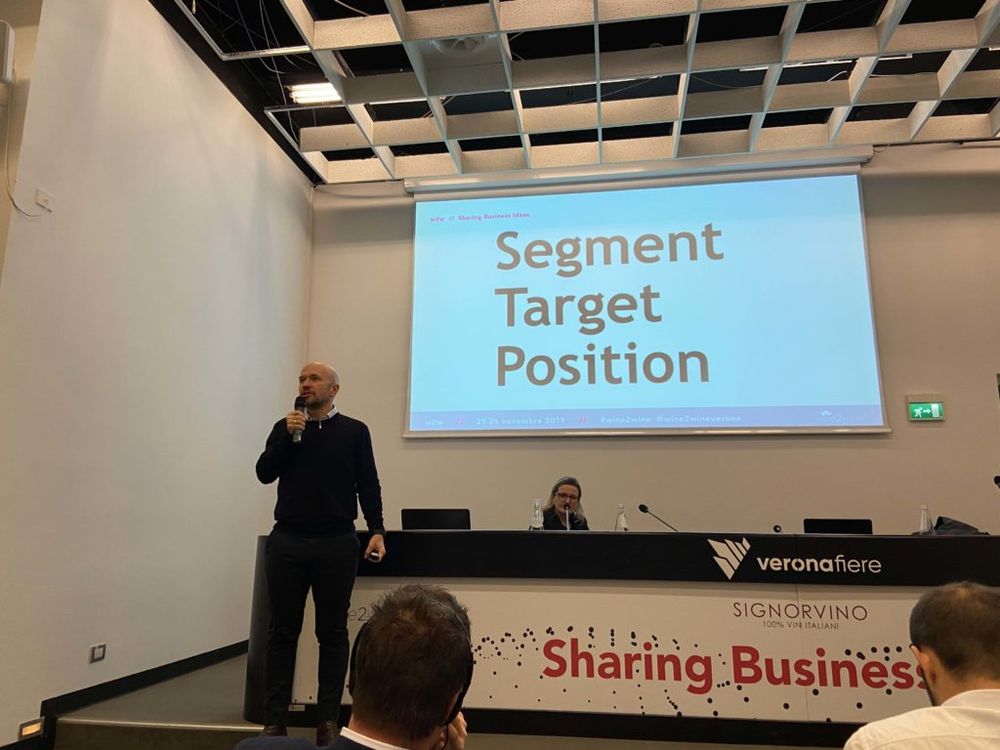
He said it was vital wine distributors and retailers concentrate their efforts on using data to better understand the wines they are selling. Particularly as most are only operating on 2-3% margins – “certainly not making above 5%” – and these insights can really help shift more wine to the right people.
“Build genuine relationships with people and how they feel about wine and how they feel about themselves,” he added.
Although his speech was billed and started off attacking millennial-based research, it was more of a criticism of what Fattorini sees as a “dirth in wine marketing”.
He questioned just how talented, skilled and qualified many of the top wine companies marketing teams are. Whether they were up for the job that was needed.
The danger of not having specialist, trained marketers in your business is that they are far more likely to get “dragged along by the next big thing” that comes along rather than fix their decision making on hard facts and data.
“It’s all about the data,” he said.
- A follow up article to this from wine2wine will look at how digital and marketing consultant, Polly Hammond of the 5 Forests consultancy, takes a very different view and believes millennials are a very distinct, different and important demographic to understand.
